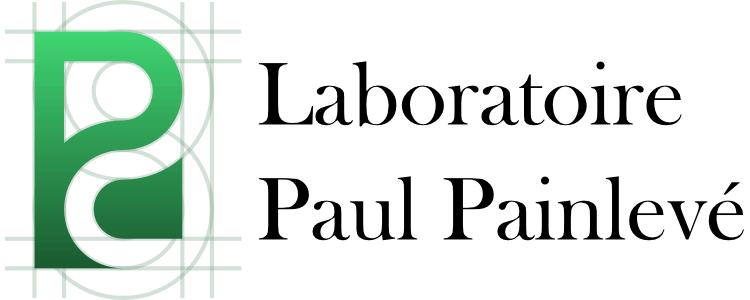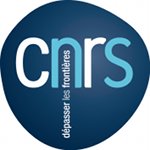10h30-11h30 Steven Galbraith (Auckland)
Linear Algebra with Errors, Coding Theory, Cryptography and Fourier Analysis on Finite Groups
Solving systems of linear equations Ax = b is easy, but how can we solve such a system when given a "noisy" version of b? Over the reals one can use the least squares method, but the problem is harder when working over a finite field. Recently this subject has become very important in cryptography, due to the introduction of new cryptosystems with interesting properties.
The talk will survey work in this area. I will discuss connections with coding theory and cryptography. I will also explain how Fourier analysis in finite groups can be used to solve variants of this problem, and will briefly describe some other applications of Fourier analysis in cryptography. The talk will be accessible to a general mathematical audience.
11h30-12h30 Jennifer Balakrishnan (Oxford)
Variations on quadratic Chabauty.
Let C be a curve over the rationals of genus g at least 2. By
Faltings' theorem, we know C has finitely many rational points. When
the Mordell-Weil rank r of the Jacobian of C is less than g, the
Chabauty-Coleman method can be used to find these rational points
through the construction of certain p-adic integrals.
I will describe a moderate extension of these results to the case when
r = g. The main tool is the theory of p-adic height pairings, which
give rise to p-adic double integrals that allow us to find integral
points on curves. In particular, I will discuss how to carry out this
``quadratic Chabauty'' method on hyperelliptic curves over number
fields (joint work with Amnon Besser and Steffen Mueller) and present
related ideas to find rational points on bielliptic genus 2 curves
(joint work with Netan Dogra).
 14h-15h Florent Jouve (Paris)
14h-15h Florent Jouve (Paris)
Chebychev's bias for elliptic curves over function fields
Chebychev was the first to point out that for ``most'' real numbers x the
number of prime numbers up to x and congruent to 3 mod 4 exceeds that of
primes up to x and congruent to 1 mod 4. This kind of phenomenon and its
generalizations have in the recent years been called Chebychev's bias. In
the 1990's Rubinstein and Sarnak gave a general framework to study that
question. They notably emphasized the relevance of related Dirichlet
L-functions and remarked that much can be deduced about Chebychev's bias if one is willing to to believe that both the Riemann Hypothesis and a strong
form of simplicity of the zeros holds for these L-functions.
The aim of the talk is to present an analogous study in the setting of
elliptic curves over the rational function field Fq(t). Given such an
elliptic curve E/Fq(t) we will see how to study sums of type
∑deg v<x cos(θv) where v runs over the places of
good
reduction of E/Fq(t) and ±θv are the arguments to the inverse
roots of the numerator of the zeta function of the reduced elliptic curve
Ev over the residual field at v. An important feature of this
geometric setting is that the conjectures on zeros of L-functions in the
classical case can often be replaced by theorems.
(Joint work with B. Cha and D. Fiorilli.)
15h-16h Martin Orr (London)
Real points of small height and the André-Oort conjecture
Let V be an an affine algebraic variety defined over ℚ alg ∩ ℝ, and suppose
that V (ℝ) is non-empty. Then there exists a point in V (ℚ alg
∩ ℝ) whose
height is bounded by a polynomial in terms of the heights of the coordinates
of a set of equations defining V .
In this talk, I will discuss the application of the above fact in the proof
of the André-Oort conjecture for general Shimura varieties assuming the
Generalised Riemann Hypothesis. I will also discuss the proof of the above
fact, which is mostly elementary with one application of the theory of Chow
forms.
 16h30-17h30 Jan de Beule (Gent)
16h30-17h30 Jan de Beule (Gent)
On the (linear) MDS Conjecture
A linear [n,k,d]-code C over the finite field fq, q=ph, is the set of vectors of a k-dimensional subspace of the n-dimensional vector
space V(n,q) over fq. The Hamming distance between two codewords is the number of positions in which they differ. The minimum
distance d is the minimum of the distances between all pairs of codewords of C. The Singleton bound for linear codes is the following
relation between the parameters k,n and d of a linear code:
k ≤ n - d+1.
If C reaches the Singleton bound, then n-k=d-1. By the fundamental theorem of linear codes, every d-1
columns of the parity check matrix of C are linearly independent. Hence, its columns represent a set of vectors in V(n-k,q)
with the property that every subset of size n-k is a basis, and vice versa. Such a set of columns is called an arc. The following statement is known as the MDS-conjecture.
An arc S of a vector space V(r,q), r < q, has size at most q+1, except when q is even and r=3 or r=q-1, in which case
it has size at most q+2.
The most recent result on this conjecture is the following.
Theorem
The MDS-conjecture is true for r < 2p-1.
This theorem was obtained by further elaborating on essential ideas found in Ball 2012, in which the MDS-conjecture was shown for
r < p+1. In this talk we report on recent joint work with Simeon Ball and Ameera Chowdury on the MDS conjecture. The talk will include the essential
parts of Ball 2012 and Ball and de Beule 2012, together with the ideas of Ameera Chowdury that lead to a short proof of the theorem so far
which is based on the use of inclusion matrices. We will particularly focus on the connection between the rank of the matrix, the weight of the vectors in its columnspace and
the extendability of an arc, and how evidence based on computational results indicates that this connection might lead to an improvement of
the theorem. Finally, if time permits, we will also discuss the connection of this problem with algebraic hypersurfaces.
~~~~~~~~~~~~~~~~~~~~~~~~~~~~~~~~~~~~~~~~~~~~~~~~~~~~~~~~
19 h - Diner
|











 Scientific Research Network "Veilige ICT"
Scientific Research Network "Veilige ICT"